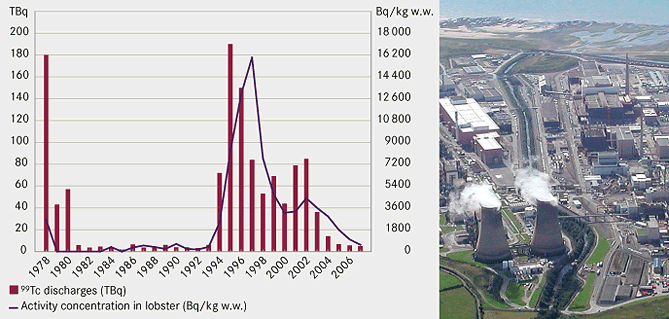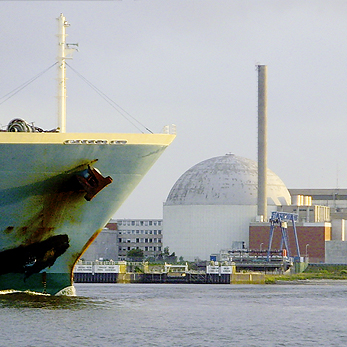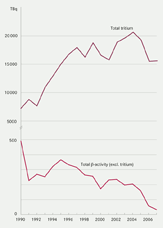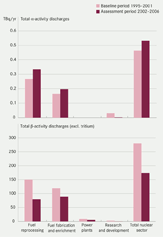The reduction of 99Tc discharges from the nuclear fuel reprocessing plant at Sellafield (UK) shows how OSPAR measures have helped to address a site-specific source of radioactive discharges. At Sellafield, reprocessing of spent nuclear fuel produces liquid waste containing 99Tc and other radionuclides. The waste was initially discharged to the Irish Sea after several years of decay storage. Following public concern over these discharges, the waste was retained in storage tanks after 1981. The Enhanced Actinide Removal Plant (EARP) was built at Sellafield to treat the waste, but was not designed to remove 99Tc. As a result, when EARP started treating the backlog of waste in 1994, 99Tc discharges and concentrations in the marine environment increased.
In response to concerns expressed by some OSPAR countries, in particular Ireland and Norway, and the joint statement by OSPAR Ministers for a reduction of 99Tc discharges, the UK reduced Sellafield’s 99Tc discharge limit from 200 to 90 TBq/yr, from 1 January 2000, and reviewed potential abatement techniques for 99Tc. The solution implemented in 2003 for new arisings of waste was vitrification and storage on land, but this technology was unsuitable for the residual stored waste. Research by Norway showed that doses to critical groups in the UK from 99Tc discharges to sea were higher than via disposal on land. This finding supported the development of a method involving precipitation of 99Tc and then storage on land.
A full-scale trial of the technique was launched, during which discharges from waste treatment were suspended. The trial was a success and the technology was implemented, allowing the UK to reduce the 99Tc discharge limit to 10 TBq/yr in April 2006. Actual discharges were below 5 TBq in 2007. By the end of 2007 all the stored technetium-bearing waste (medium-active concentrate) had been treated and associated discharges of 99Tc from this main source at Sellafield ended.





